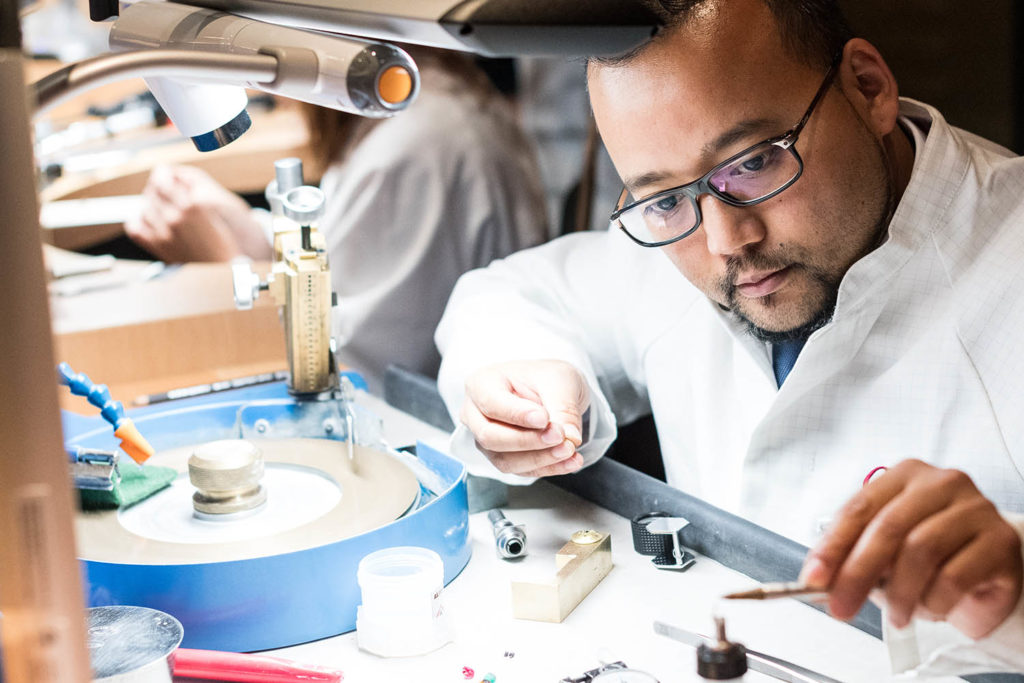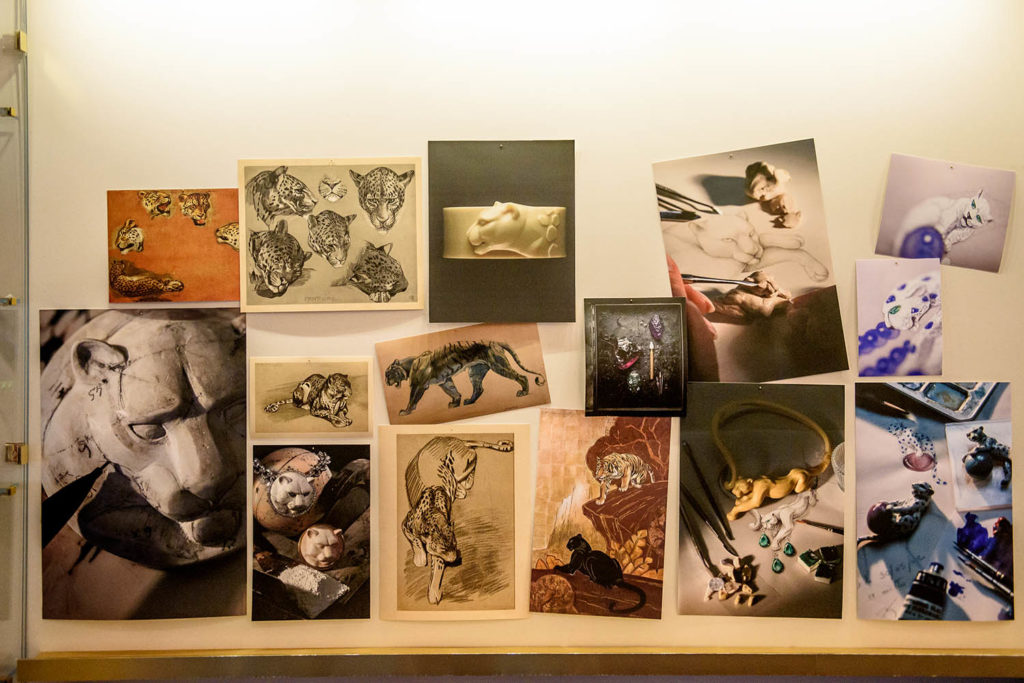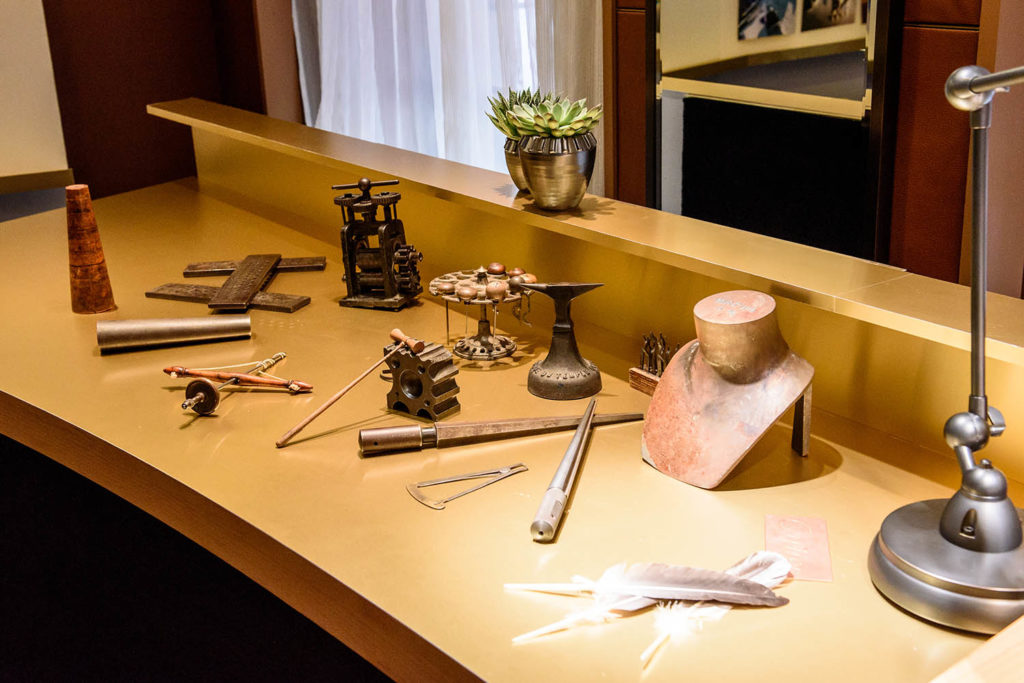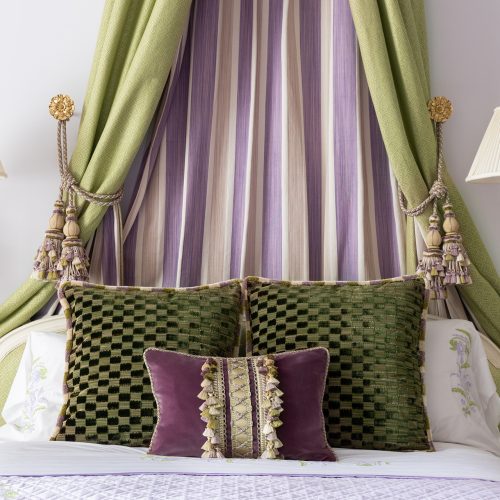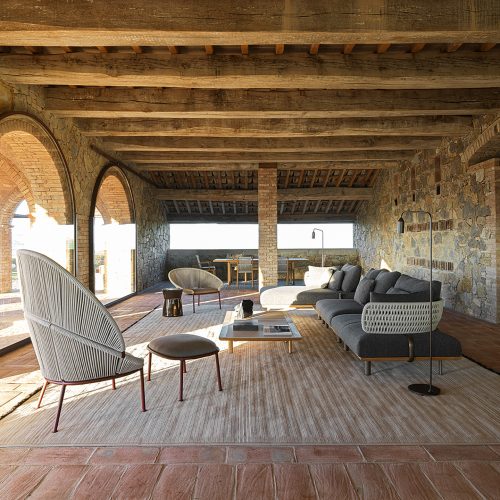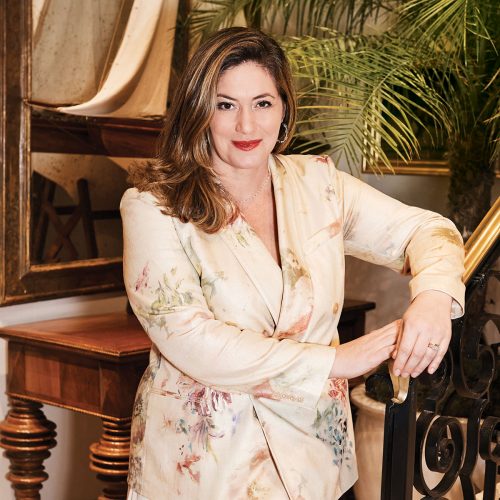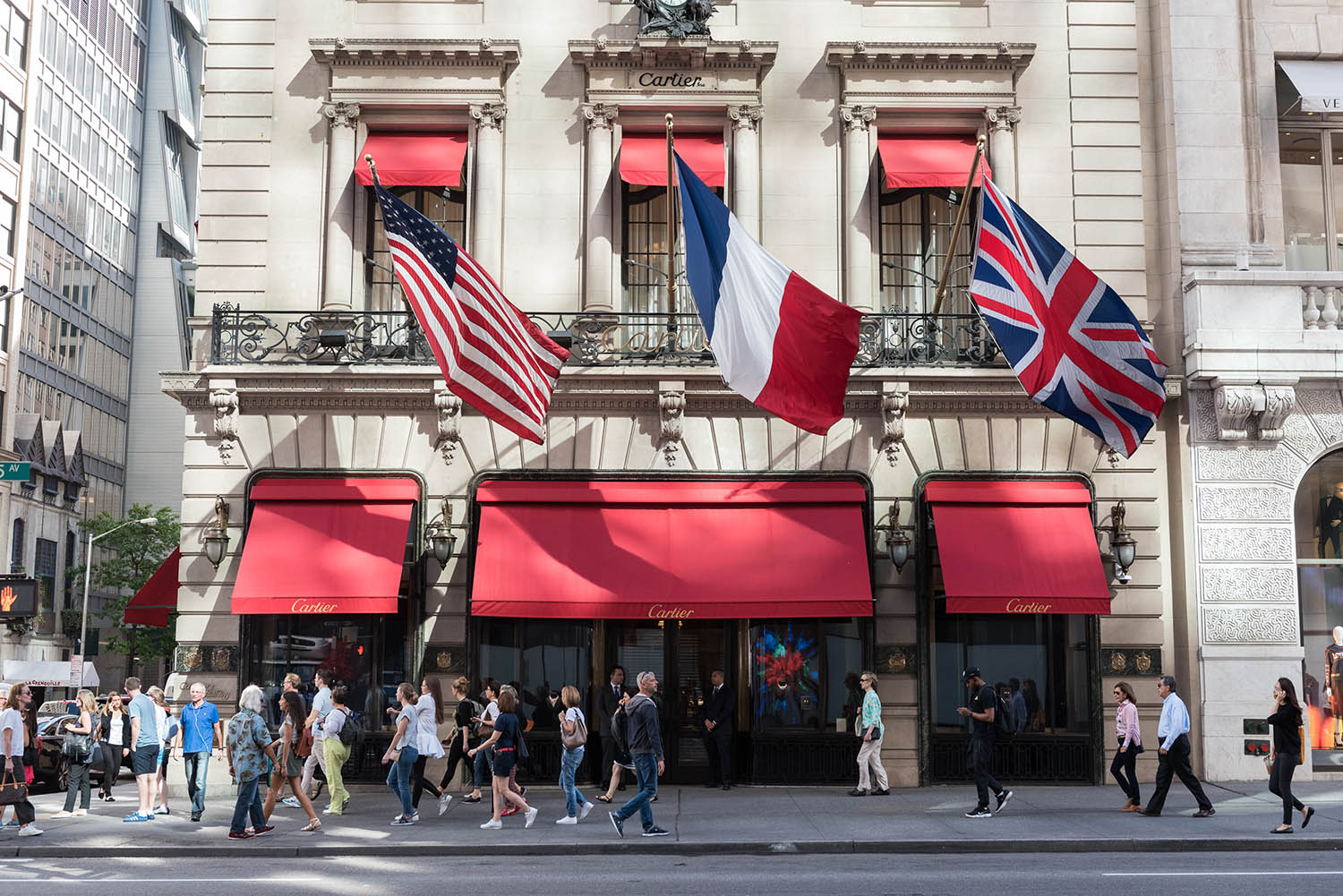

Cartier’s Largest U.S. High Jewelry Exhibition Opens in New York
500 pieces, including the brand's latest collection of high jewels, restored vintage pieces, and its private trove of historic treasures, go on display at the Cartier Mansion
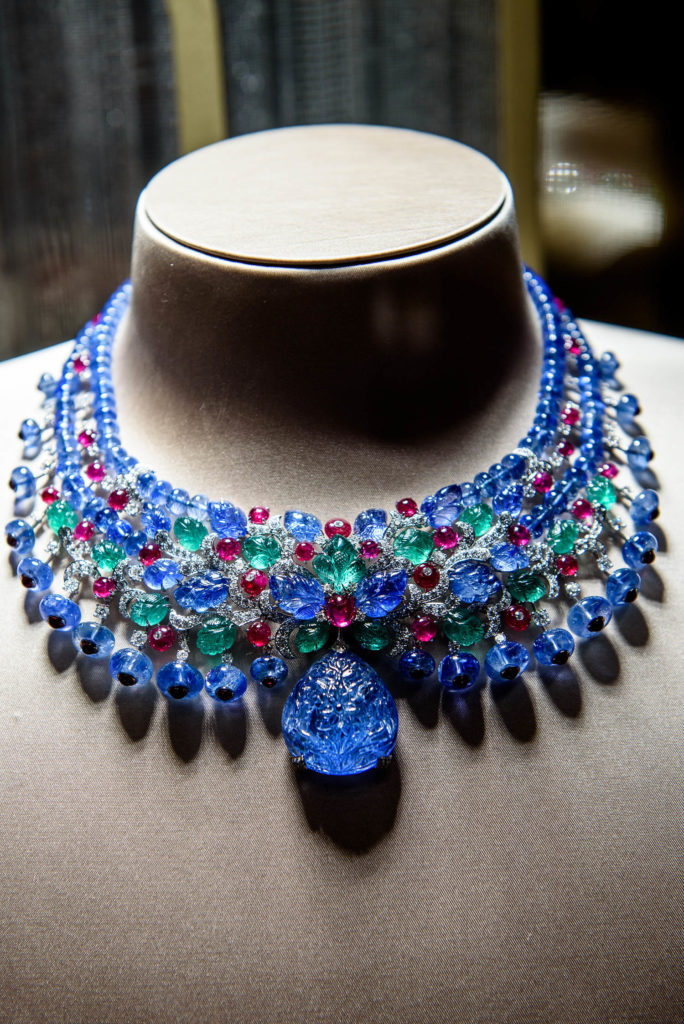
Over its 170-year-history Cartier has produced some of the most iconic high-jewelry designs: the whimsical Tutti Frutti collection, the Panthère motifs, the geometric Art Deco creations, to name a few. One of the keys to the luxury jeweler’s success is that despite its varying styles and motifs, the pieces are always unmistakably identifiable as Cartier. The unifying thread, perhaps, is the brand’s particular emphasis on the stones themselves, and how they provide inspiration for the design.
“The design and composition are determined by the stone they serve to showcase. This fundamental interest in the gemstone is a core component of the Cartier style. The design should never infringe upon the reading and revelation of the stone’s beauty,” Pierre Rainero, director of image, style, and heritage at Cartier, tells Galerie.
Now, from October 21 through October 29, the public can see the history of the maison’s artistry and craftsmanship as the French luxury brand hosts its largest U.S. high-jewelry exhibition ever in New York. “The Cartier Haute Joaillerie Exhibition” is on view at the Cartier Mansion on Manhattan’s Fifth Avenue—timed with the boutique’s 100-year anniversary. A multi-part exhibition, it is the new 65-piece Résonances de Cartier high-jewelry collection that forms the centerpiece.
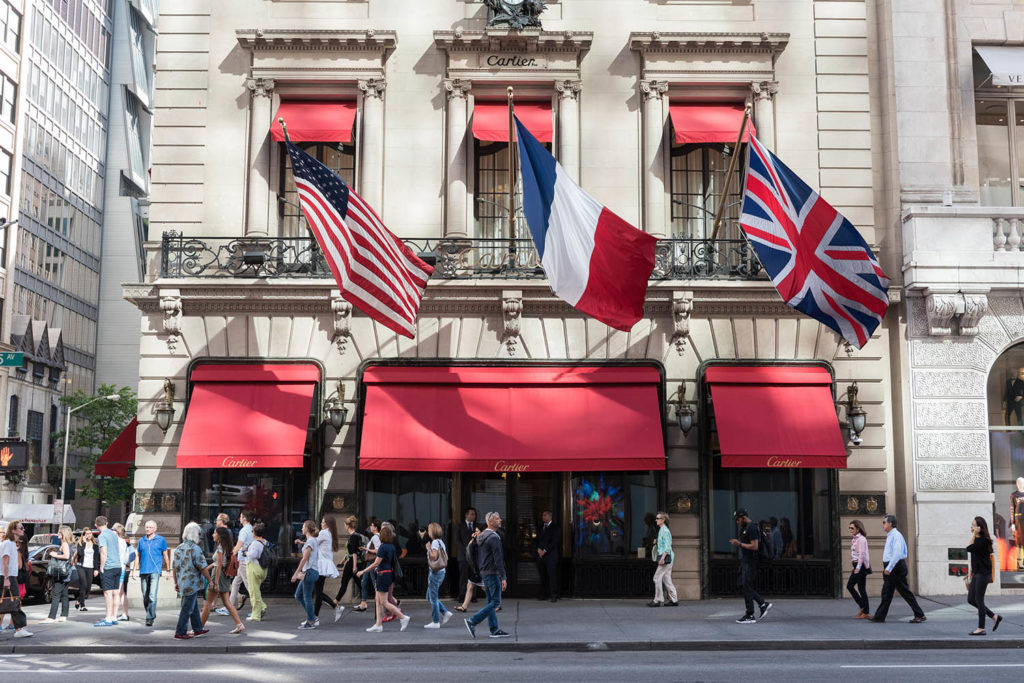
The show will also include pieces from Cartier’s traditional collection of jewels—vintage pieces that the luxury brand repurchased and restored. Both collections are on sale.
Perhaps the most exciting element, however, is the chance to see a selection of the brand’s private collection of important historic jewels, known as the Cartier Collection. (These are loaned to museums and special exhibitions around the world.) Here, visitors can view pieces formerly owned by captains of industry, notable families, and celebrities in the U.S., including the Vanderbilts, the Woolworths, and Elizabeth Taylor.
Walking through the 52nd Street entrance, visitors are greeted with a large vertical display case housing three exquisite examples of the brand’s latest Tutti Frutti jewels. Introduced in the 1920s but not named until 1970, the brightly colored, whimsical design—a speckling of diamonds, emeralds, rubies, and sapphires carved in floral motifs—is inspired by Indian craftsmanship. The combination of the different gems and intricately carved leaves, fruits, and flowers makes it nearly impossible to create the same piece twice, adding to its allure.
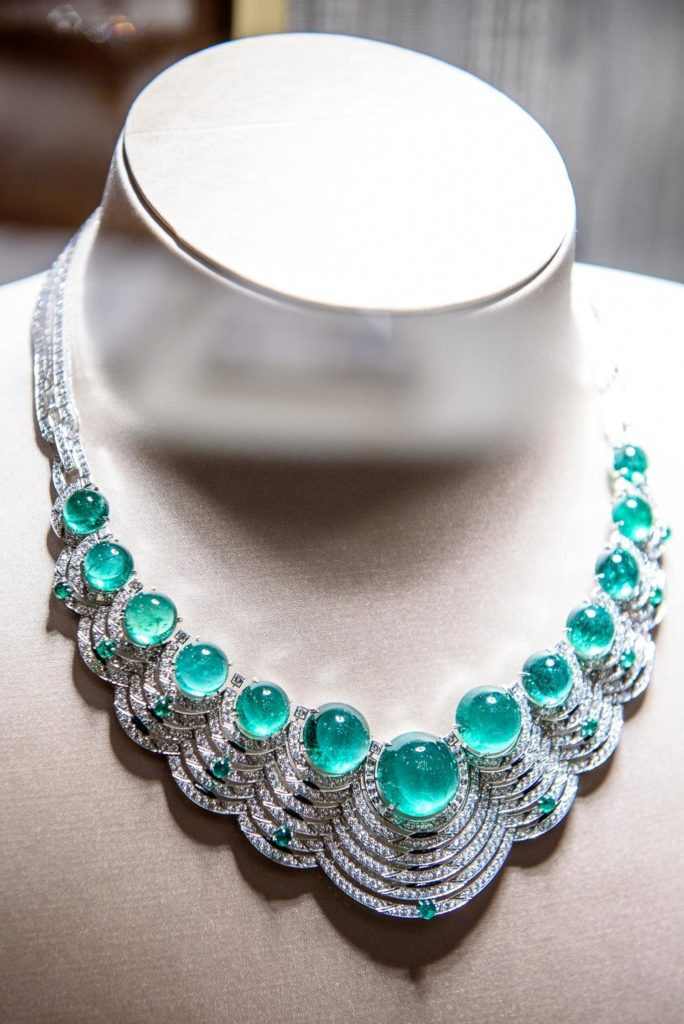
Nearby is the largest group of Résonances de Cartier jewels, including some of the most remarkable pieces in the collection. The first is a necklace, featuring approximately 78 carats of cabochon emeralds set in strands of white gold in a wavelike pattern paved with diamonds. Another standout is a bracelet of thin white gold strands in a skeletonized geometric pattern paved in white diamonds with a row of triangular-shaped diamonds that circles the interior of the cuff.
In addition to exceptional rubies, sapphires, emeralds, and diamonds, there are some fine examples of unexpected gem combinations used to delightful effect. The long, twisting Panthère Marine has two pear-shaped aquamarines totaling 35 carats matched, with two briolette-shaped aquamarines and a smaller pear-shaped aquamarine, all hanging from a long necklace of aquamarine beads. Another is a diamond pavé Cartier Panthère with its head and front paw wrapped around a large cabochon rubellite on a diamond and rubellite bracelet.
In addition to exceptional rubies, sapphires, emeralds and diamonds, there are some fine examples of unexpected gem combinations used to delightful effect. The long, twisting “Panthère Marine” has two pear-shaped aquamarines totaling 35 carats matched, with two briolette shaped aquamarines and smaller pear-shaped aquamarine, all hanging from a long necklace of aquamarine beads. Another is a diamond pavé Cartier Panthère with its head and front paw wrapped around a large cabochon rubellite on a diamond and rubellite bracelet.
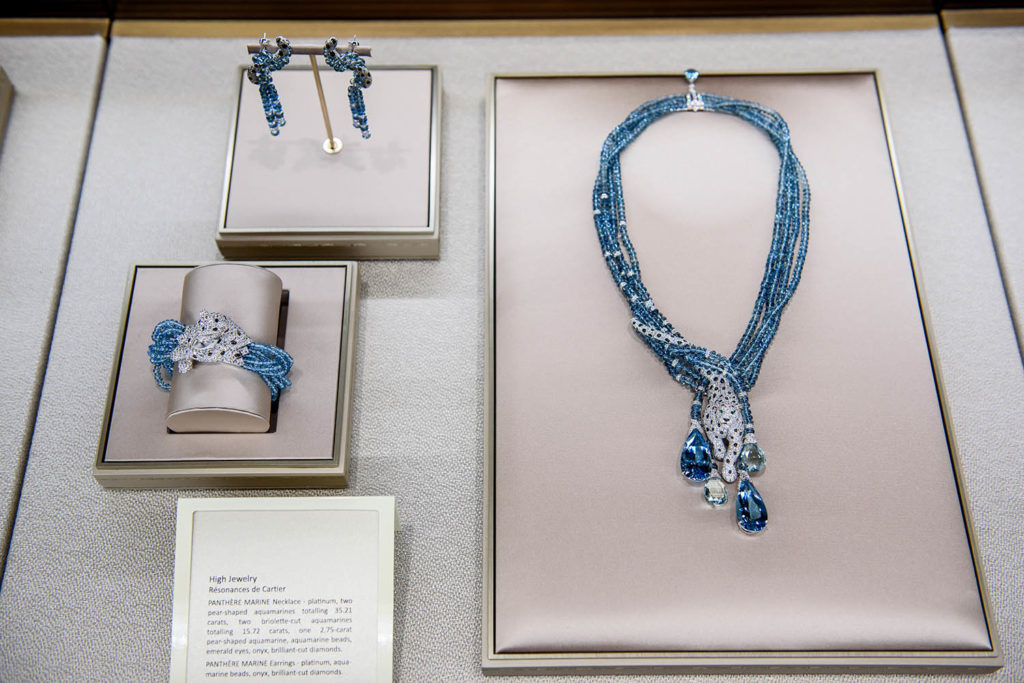
More unusual materials include a highly polished and faceted 84-carat watermelon tourmaline as the center stone of a bracelet paved in multi-colored sapphires and diamonds. Black jasper is carved into a two-headed Cartier Panthère with emerald eyes. A motif of dark brown leaves is carved from petrified wood attached to a vine of diamond pavé.
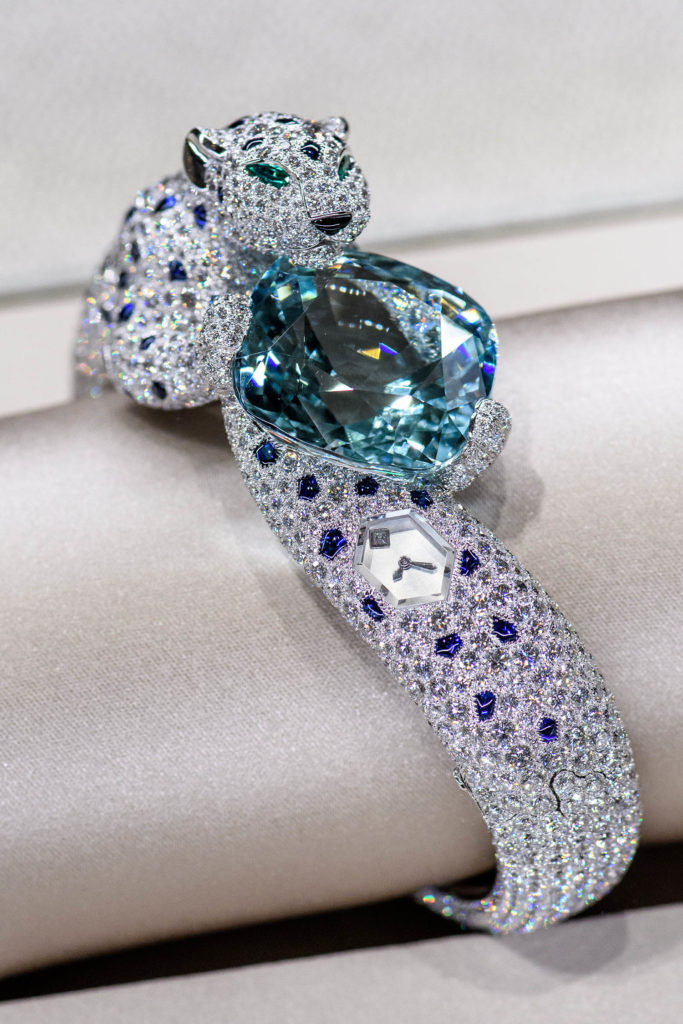
Cartier’s high jewels are all still made in Paris by a team of around 260 specialized artisans and craftspeople, many of whom are trained at Cartier’s own Jewelry Institute (founded in 2002 to pass on the traditional skills to future generations). On the third floor of the Cartier Mansion, three of these craftspeople demonstrate the delicate and detailed work that goes into creating the pieces. Also on display here is a selection of historic drawings and tools.
The Cartier Mansion itself also plays an integral role in the story. In a renovation that took two and a half years, it reopened in 2016 to boast larger, brighter spaces that combine modern furnishings with beautiful antique fixtures and objets d’art. The salons are named after some of Cartier’s most prominent clients: Elizabeth Taylor, Andy Warhol, and Gary Cooper. The first time the landmark building is being used for a public exhibition, the salons will also be displaying historic jewels related to each person. Spectacular jewels, design, and artistry converge at this not-to-be-missed exhibition.
“The Cartier Haute Joaillerie Exhibition” is on view October 21–29 at Cartier, 653 Fifth Avenue, New York City.
